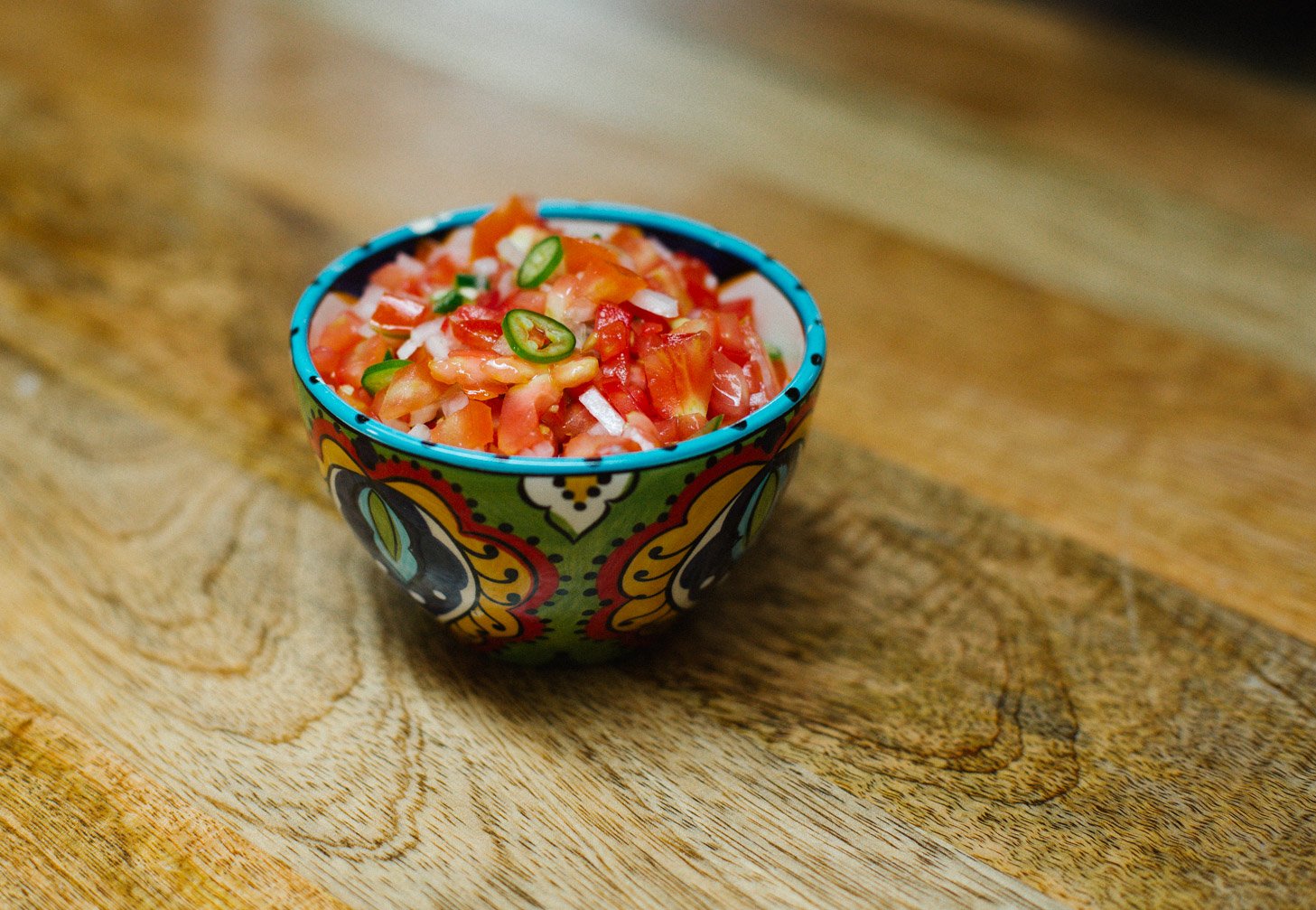Easy, Delicious, Spicy: 5 Homemade Salsa Recipes
When asked to write about my best salsa recipe, I didn’t suspect what I was really getting into…
Written by Jorge Fitz | 7.5 min read
Published June 6, 2020
When the Tahona Society (the education arm of our good friends at Altos Tequila) asked me to collaborate with this project, I began to think about what salsas I should include. My best salsas? I must confess I spent several days with the question running through my head.
My best salsas?
The answer came to me, like all my best ideas, after a sleepless night… they are all my best salsas. I don’t want to sound arrogant or annoying, but bear with me… this will all make sense.
In Mexico, our salsas are always prepared in the moment, usually with local and seasonal ingredients. Traversing the geography of our country means taking a trip through many regional cuisines, crossing cultural borders that don’t follow state lines, but rather a blueprint of the cultures of our ancestors….
There are so many things to try! And what do you know? Every region comes with its salsas. In the center of Mexico, where we are lucky to be a melting pot for all of these people and cultures, we are very used to having it all.
We have habanero salsas from the Yucatán, the base of the aguachile from the north pacific region, the salsas arrieras (some even made with ants!) from the central regions, and the “blender” salsas that “progress” and a hectic lifestyle brought us.
I guess what I mean is that I can talk best about my “favorite” salsas in any given situation.
Whether one salsa is better than another, if one’s intensity stands out or if it ignites the flavors of a taco perfectly—this all is determined precisely by what lies beneath it. I just wrote this and I keep thinking about it…because, at the same time, a mediocre taco can become glorious with the right salsa, no?
Salsa Verde – Fresh Green Salsa
Ingredients
5 tomatillos (8.60 oz or 245g)
¼ onion (2.35 oz or 66.5 g)
2 serrano chilies
1 handful cilantro with stems (1.3 oz or 37g)
salt, to taste
Procedure
Grind all of the ingredients in a blender. Salt to taste.
Red Roasted Tomato Salsa
Ingredients
3 Roma tomatoes
¼ onion
1 clove garlic
2 serrano chiles
salt, to taste
Procedure
Char the tomatoes, chiles and onion on a comal or hot iron skillet for 8 minutes (ish) on each side. The best flavors happen when you allow the char to be dark–very dark.
Grill the garlic for 4 minutes (ish) on each side. Take care not to burn it.
In a molcajete (mortar and pestle) grind the ingredients, starting with the salt, garlic, onion chiles, and then tomatoes. If using a blender, do not “overblend” —the tomato sauce should have a chunky texture.
Add chopped fresh cilantro and raw garlic (instead of the roasted one) for a deliciously aromatic and pungent variation.
Homestyle Guacamole
Ingredients
1 big, ripe avocado
2 Roma tomatoes, diced
1/2 small onion, finely diced
Any type of chile: fresh jalapeño, serrano, Thai, dried chile de árbol, chipotle or even chile flakes
1 small bunch of fresh cilantro, roughly chopped 1 lime, juiced sea salt to taste
Procedure
Cut the avocado in half and scoop the flesh into a bowl. Add the chopped tomatoes to the bowl.
Then add the chopped onion and minced chile.
The trick to the perfect guacamole is the masher: use one or use your hands to get a nice, chunky consistency. A potato or beans masher also works.
Add the lime juice—this keeps the avocado from oxidizing and turning black, but also helps emulsify the delicate avocado oils and brings beautiful acidity to the equation.
Add sea salt to taste.
Finally, add the roughly chopped cilantro and integrate. In my opinion, there is not such a thing as too much cilantro in a guacamole.
Pico de Gallo
Ingredients
2 tomatoes
¼ white onion
1 chile serrano
The juice of ½ a lime
Sea salt
Procedure
Dice the tomatoes, onion, chile serrano, lime and salt. Set aside.
Red Tomato & Chipotle Chile Salsa
Ingredients
6 red, ripe Roma tomatoes
½ onion
4 dried chipotle chiles
1 clove garlic
1 ½ teaspoon salt
Procedure
Roast the ingredients in a pan or on a comal (griddle). The chiles start smelling good. Take care not to burn the very dry chiles. If you are using canned chipotle, do not roast them.
If using a blender, add all the ingredients and blend (pulse?) until you have a smooth, yet chunky texture. If grinding on a molcajete, start with the garlic and salt, then the onion, chiles and finally the roasted tomatoes.
Add sea salt to taste.
So, what makes
the “perfect salsa” perfect?
There are many things that go into the mythical, ideal salsa. It may sound elusive, I know, so here are the five most important, according to yours truly.
Freshness
First I want to recognize that there is an exception to this rule. There are some bottled salsas that never disappoint– these are usually vinegary or suspended in oil. Otherwise, and as a rule of thumb, in Mexico we know that a good salsa should be made in the moment, and if refrigerated, be consumed shortly thereafter.
Chile
This point alone merits an entire volume, or at least a post– Luckily, I already wrote it! I recommend you read it to understand that chileness is not the same as spiciness. And yes, we Mexicans are pushing for it to be recognized as the sixth flavor. The Japanese got away with umami, so I think we have a pretty good shot.
But getting back to salsas, that “guacamole” that you prepare without chile so that it isn’t too hot for your friends…is not guacamole, it’s mashed avocado.
Time
We Mexicans love to say that there’s nothing easier or quicker than whipping up a bowl of fresh salsa. And while that may be true for a few recipes, a good salsa generally takes some time. Prepare them with patience and love, because the result is worth it.
A little too much salt
A Mexican red sauce for tacos for example, should always be a little on the salty side. My abuela Tita used to say that a salsa should be “picosita para que alcance y saladita para que sobre” (hot enough to make sure there’ll be enough for everyone and salty enough so that there’s some left over for tomorrow).
Balance
The different preparation techniques, used in Mexico since ancestral times, transform the original flavors of the ingredients to bring out more sweetness, acidity, bitterness or piquancy in the salsa.
Something I love to think about is when I tatemar, or heavily cook onion, for example– not just roasting it, but taking it just a bit further, to the point where most cooks would consider it ruined.
But cooking onions in this way caramelizes the onion’s natural sugars, concentrating and burning them, adding clearly bitter notes to the sweetness.
Enter the acidity from slightly roasted tomatillos, the heat from the chile, the saltiness. Each of these flavors pulls at your tongue from different angles, and in the center of it all, when there’s balance, umami is born.






